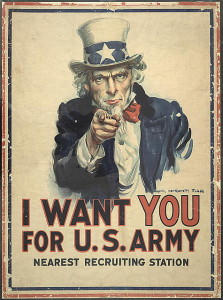Diane Dillon (born Glendale, California, 1933) is a picture book illustrator. She and her husband Leo Dillon, who died in 2012, are the only people to have received two Caldecott Medals back to back. They illustrated, among other works, Why Mosquitoes Buzz in People’s Ears: A West African Tale (1976 Caldecott Medal) and Ashanti to Zulu: African Traditions (1977 Caldecott Medal). They also received a 2005 Coretta Scott King Honor Award for The People Could Fly: A Picture Book.
Percival Lowell (born Boston, Massachusetts, 1855; died Flagstaff, Arizona, November 12, 1916) was an astronomer. Lowell instigated the research that ultimately found Pluto. The former planet was found fourteen years after he died. He created the Lowell Observatory in Flagstaff, Arizona Territory in 1894. The observatory is still in operation.
Abigail Powers Fillmore (born Stillwater, New York, 1798; died Washington, DC, March 30, 1853) was America’s First Lady from July 9, 1850 to March 4, 1853. She was the first wife of Millard Fillmore, thirteenth president of the United States. A teacher, she was the first First Lady to work before and after she was married. After they moved into the White House, she created its first library. She also had the first bathtub installed, and the first kitchen stove was added. Prior to that, food had been prepared over an open fireplace. Children could visit a website at: Abigail Fillmore.
Joseph Priestley (born Fieldhead, England, 1733; died Northumberland, Pennsylvania, February 6, 1804) was a scientist and a cleric. While he is most famous for discovering oxygen, he actually isolated nine other gases, including carbon dioxide. He lived in the United States for ten years.
Ellen Raskin (born Milwaukee, Wisconsin, 1928; died New York, New York, August 8, 1984) was a children’s author and illustrator. She wrote and illustrated twelve picture books. She illustrated at least 25 books written by other authors, including Rebecca Caudhill and Aileen Fisher. She wrote four novels for children. She received a 1975 Newbery Honor Award for Figgs and Phantoms. One of her most well-known books is The Westing Game, which earned Raskin the well-deserved 1979 Newbery Medal. Children could visit a website at: Ellen Raskin.
Thomas Rockwell (born New Rochelle, New York, 1933; died Danbury, Connecticut, September 27, 2024) wrote books for children. The son of Norman Rockwell, he is known for his book How to Eat Fried Worms.


